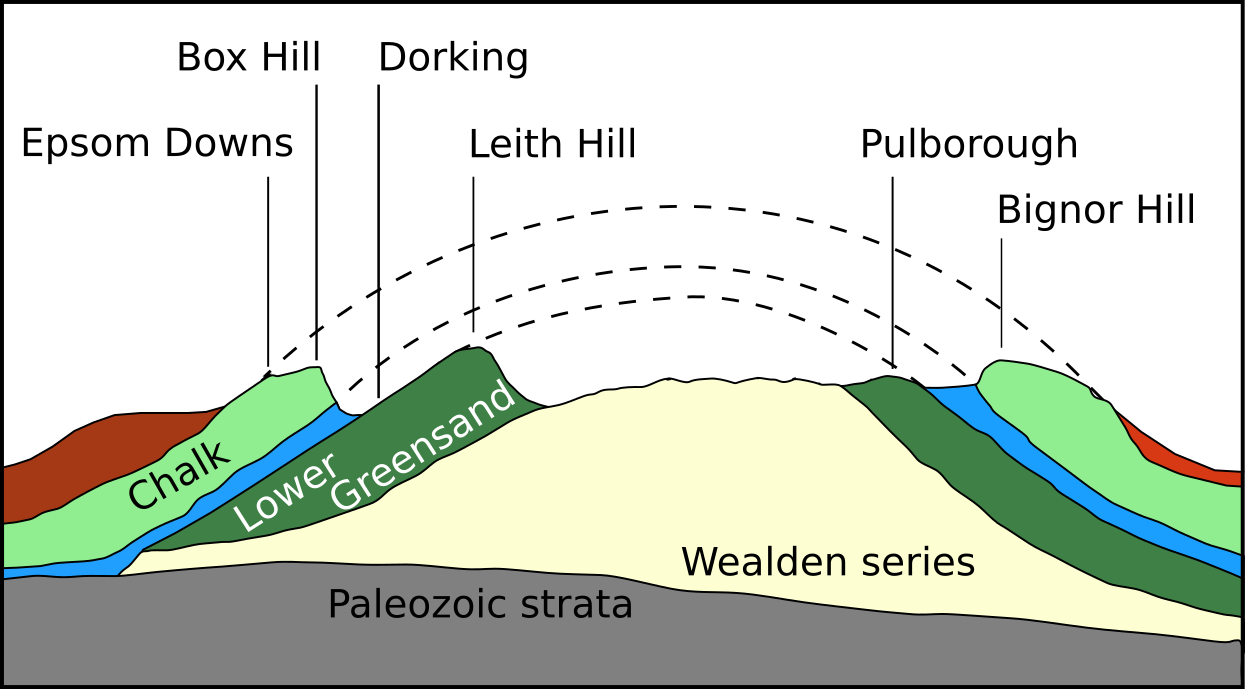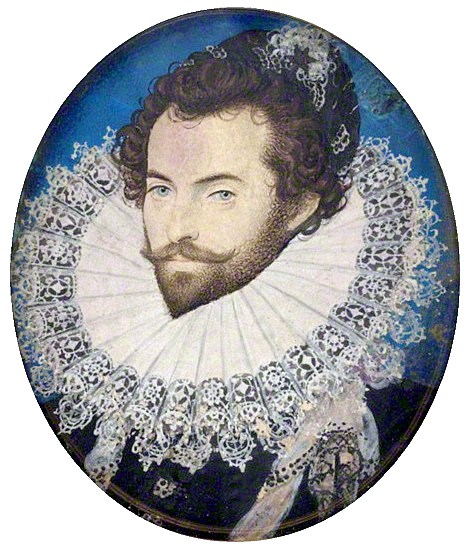|
John Townshend (1564–1603)
Sir John Townshend MP (c.1568 – 2 August 1603), of Raynham Hall in Norfolk, was an English nobleman, politician, and knight. He was the son of Sir Roger Townshend (died 1590) and Jane Stanhope. He was also a soldier and Member of Parliament. He was killed in a duel with Sir Matthew Browne in August 1603. Family John Townshend was the eldest son of Sir Roger Townshend (died 1590) and his second wife, Jane Stanhope (c.1547–1618), the daughter of Sir Michael Stanhope (d.1552) of Shelford, Nottinghamshire, by his wife, Anne Rawson, daughter of Nicholas Rawson of Aveley, Essex. After the death of Sir Roger Townshend (died 1590), his widow, Jane, married, as his second wife, Henry Berkeley, 7th Baron Berkeley. She died at her house in the Barbican on 3 January 1618, leaving a will dated 20 July 1617 which was proved by her grandson, Sir Roger Townshend, 1st Baronet, on 10 March 1618. Career Townshend inherited considerable estates in Norfolk from his father, coming to be ... [...More Info...] [...Related Items...] OR: [Wikipedia] [Google] [Baidu] |
Orford (UK Parliament Constituency)
Orford was a constituency of the House of Commons. Consisting of the town of Orford in Suffolk, it elected two Members of Parliament (MP) by the block vote version of the first past the post system of election until it was disenfranchised in 1832. History Orford was first represented in the Parliament of England The Parliament of England was the legislature of the Kingdom of England from the 13th century until 1707 when it was replaced by the Parliament of Great Britain. Parliament evolved from the Great Council of England, great council of Lords Spi ... in 1298, but did not regularly send members until 1529. The right of election was vested in the Mayor, eight portmen, twelve "capital burgesses" and the freemen of the borough. In the early days of its representation, Orford had been a prosperous port and its freemen were numerous, but by the 18th century the number of freemen was deliberately kept low to facilitate controlling the elections, and the town had beco ... [...More Info...] [...Related Items...] OR: [Wikipedia] [Google] [Baidu] |
Surrey
Surrey () is a Ceremonial counties of England, ceremonial county in South East England. It is bordered by Greater London to the northeast, Kent to the east, East Sussex, East and West Sussex to the south, and Hampshire and Berkshire to the west. The largest settlement is Woking. The county has an area of and a population of 1,214,540. Much of the north of the county forms part of the Greater London Built-up Area, which includes the Suburb, suburbs within the M25 motorway as well as Woking (103,900), Guildford (77,057), and Leatherhead (32,522). The west of the county contains part of Farnborough/Aldershot built-up area, built-up area which includes Camberley, Farnham, and Frimley and which extends into Hampshire and Berkshire. The south of the county is rural, and its largest settlements are Horley (22,693) and Godalming (22,689). For Local government in England, local government purposes Surrey is a non-metropolitan county with eleven districts. The county historically includ ... [...More Info...] [...Related Items...] OR: [Wikipedia] [Google] [Baidu] |
Dorking
Dorking () is a market town in Surrey in South East England about south-west of London. It is in Mole Valley, Mole Valley District and the non-metropolitan district, council headquarters are to the east of the centre. The High Street runs roughly east–west, parallel to the Pipp Brook and along the northern face of an outcrop of Lower Greensand Group, Lower Greensand. The town is surrounded on three sides by the Surrey Hills National Landscape and is close to Box Hill, Surrey, Box Hill and Leith Hill. The earliest archaeological evidence of human activity is from the Mesolithic and Neolithic periods, and there are several Bronze Age bowl barrows in the local area. The town may have been the site of a staging post on Stane Street (Chichester), Stane Street during Roman Britain, Roman times, however the name 'Dorking' suggests an History of Anglo-Saxon England, Anglo-Saxon origin for the modern settlement. A marketplace, market is thought to have been held at least weekly sinc ... [...More Info...] [...Related Items...] OR: [Wikipedia] [Google] [Baidu] |
Betchworth Castle
Betchworth Castle is a mostly crumbled ruin of a fortified medieval stone house with some tall, two-storey corners strengthened in the 18th century, in the north of the semi-rural parish of Brockham. It is built on a sandstone spur overlooking the western bank of the River Mole in Surrey in England. The ruin is a Scheduled monument and is in the lowest category of listed architecture, Grade II, due east of Dorking railway station in Dorking and due west of Reigate. Although close to the river and edge of the course it is surrounded by "Betchworth Park" Golf Course named after the village east. In 1798, Henry Peters bought Betchworth Castle and spent considerable money renovating it to be a comfortable family home. Henry lived at Betchworth Castle with his wife, Charlotte Mary Morrison, and his twelve children until his death in 1827. After Henry’s death, Betchworth Castle was not inherited by his children and therefore was bought by David Barclay and later by Henry Ho ... [...More Info...] [...Related Items...] OR: [Wikipedia] [Google] [Baidu] |
Hounslow Heath
Hounslow Heath is a local nature reserve in the London Borough of Hounslow and at a point borders London Borough of Richmond upon Thames, Richmond upon Thames. The public open space, which covers , is all that remains of the historic Hounslow Heath which covered more than . The present day area is bounded by A315 Staines Road, A3063 Wellington Road South, A314 Hanworth Road, and the River Crane, London, River Crane. History The heathland of Hounslow Heath originally covered an area underlain by Taplow gravel that now includes parts of Bedfont, Brentford, Cranford, London, Cranford, Feltham, Hampton, London, Hampton, Fulwell, London, Fulwell, Hanworth, Harlington, London, Harlington, Harmondsworth, Heston, Hounslow, Isleworth, Stanwell, Teddington, Twickenham, and Heathrow (hamlet), Heathrow. Hounslow Heath has had major historical importance, originally crossed by main routes from London to the west and southwest of Britain. Staines Road, the northern boundary of the present he ... [...More Info...] [...Related Items...] OR: [Wikipedia] [Google] [Baidu] |
James VI And I
James VI and I (James Charles Stuart; 19 June 1566 – 27 March 1625) was King of Scotland as James VI from 24 July 1567 and King of England and King of Ireland, Ireland as James I from the union of the Scottish and English crowns on 24 March 1603 until Death and funeral of James VI and I, his death in 1625. Although he long tried to get both countries to adopt a closer political union, the kingdoms of Kingdom of Scotland, Scotland and Kingdom of England, England remained sovereign states, with their own parliaments, judiciaries, and laws, ruled by James in personal union. James was the son of Mary, Queen of Scots, and a great-great-grandson of Henry VII of England, Henry VII, King of England and Lord of Ireland, and thus a potential successor to all three thrones. He acceded to the Scottish throne at the age of thirteen months, after his mother was forced to abdicate in his favour. Although his mother was a Catholic, James was brought up as a Protestant. Four regents gove ... [...More Info...] [...Related Items...] OR: [Wikipedia] [Google] [Baidu] |
Privy Council Of The United Kingdom
The Privy Council, formally His Majesty's Most Honourable Privy Council, is a privy council, formal body of advisers to the sovereign of the United Kingdom. Its members, known as privy counsellors, are mainly senior politicians who are current or former members of either the House of Commons of the United Kingdom, House of Commons or the House of Lords. The Privy Council formally advises the sovereign on the exercise of the Royal prerogative in the United Kingdom, royal prerogative. The King-in-Council issues Executive (government), executive instruments known as Orders in Council. The Privy Council also holds the delegated authority to issue Orders of Council, mostly used to regulate certain public institutions. It advises the sovereign on the issuing of royal charters, which are used to grant special status to incorporated bodies, and city status in the United Kingdom, city or Borough status in the United Kingdom, borough status to local authorities. Otherwise, the Privy Co ... [...More Info...] [...Related Items...] OR: [Wikipedia] [Google] [Baidu] |
Christopher Heydon
Sir Christopher Heydon (14 August 1561 – 1 January 1623) was an English soldier, politician, and writer on astrology, who was a Member of Parliament for Norfolk from 1588 to 1589. He quarrelled with his family over its estates in Norfolk. Background Born in Surrey, Heydon was the eldest son of Sir William Heydon (1540–1594) of Baconsthorpe, Norfolk, and his wife Anne, daughter of Sir William Woodhouse of Hickling, Norfolk. The family was powerful in Norfolk affairs, owning many manors and living at Baconsthorpe Castle, a large country house in North Norfolk.Capp, Bernard, ''Heydon, Sir Christopher (1561–1623), soldier and writer on astrology'' in ''Oxford Dictionary of National Biography'' (Oxford University Press, 2004) Education Heydon was educated at Gresham's School, Holt and Peterhouse, Cambridge, where he knew the young Robert Devereux, 2nd Earl of Essex, and after graduating BA in 1579 travelled widely on the continent. Dispute with his father Deeply in debt, ... [...More Info...] [...Related Items...] OR: [Wikipedia] [Google] [Baidu] |
Edward Coke
Sir Edward Coke ( , formerly ; 1 February 1552 – 3 September 1634) was an English barrister, judge, and politician. He is often considered the greatest jurist of the Elizabethan era, Elizabethan and Jacobean era, Jacobean eras. Born into an upper-class family, Coke was educated at Trinity College, Cambridge, before leaving to study at the Inner Temple, where he was called to the Bar on 20 April 1578. As a barrister, he took part in several notable cases, including ''Slade's Case'', before earning enough political favour to be elected to Parliament, where he served first as Solicitor General for England and Wales, Solicitor General and then as Speaker of the House of Commons (United Kingdom), Speaker of the House of Commons. Following a promotion to Attorney General for England and Wales, Attorney General he led the prosecution in several notable cases, including those against Robert Devereux, 2nd Earl of Essex, Robert Devereux, Walter Raleigh, Sir Walter Raleigh, and the Gun ... [...More Info...] [...Related Items...] OR: [Wikipedia] [Google] [Baidu] |
Thomas Birch
Thomas Birch (23 November 17059 January 1766) was an English historian. Life He was the son of Joseph Birch, a coffee-mill maker, and was born at Clerkenwell. He preferred study to business but, as his parents were Quakers, he did not go to the university. Notwithstanding this circumstance, he was ordained deacon in the Church of England in 1730 and priest in 1731. As a strong supporter of the Whigs, he gained the favour of Philip Yorke, afterwards Lord Chancellor and first Earl of Hardwicke, and his subsequent preferments were largely due to this friendship. He held successively a number of benefices in different counties, and finally in London. He was noted as a keen fisherman during the course of his lifetime, and devised an unusual method of disguising his intentions. Dressed as a tree, he stood by the side of a stream in an outfit designed to make his arms seem like branches and the rod and line a spray of blossom. Any movement, he argued, would be taken by a fish to ... [...More Info...] [...Related Items...] OR: [Wikipedia] [Google] [Baidu] |





